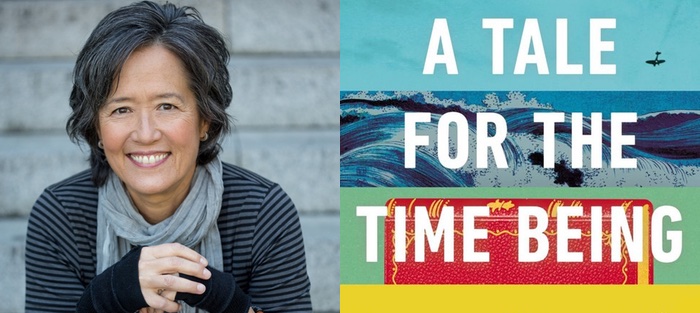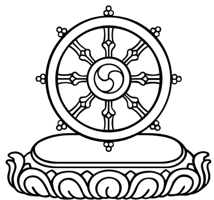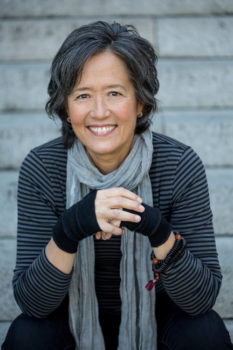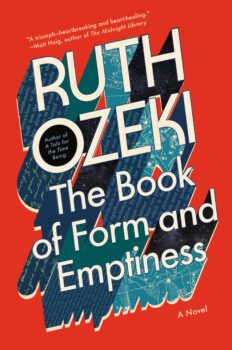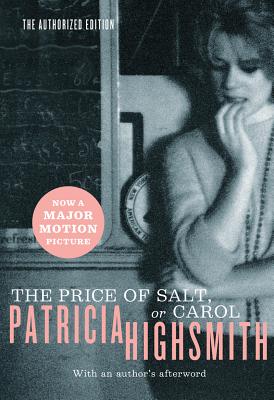At the beginning of my second semester at Warren Wilson College’s MFA for Writers, my supervisor Ana Menéndez challenged me to identify the themes of my novel. After some thought, I created a list, including “feeling like you were born into the wrong family,” “the truth, vs. the stories you tell yourself about any given situation,” and “the credit intersectionally marginalized characters deserve, vs. the credit they actually get, from authority figures with more privilege.”
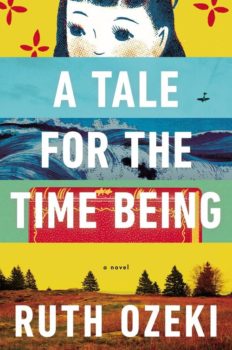 Toward the end of the semester, she asked me how I was going to structure my novel, given that I already had over 100 pages of writing. I made a list of plot points, including: “Lana finds out about Patrick’s infidelity with her best friend Veronica and has a nervous breakdown,” and “Crystal gets a blood test and realizes she’s not a Clancy after all.” My theme list read like the pensées of a theory-glasses-wearing lesbian feminist (if the comfortable shoe fits . . .), and my plot points list smacked of the season bible of an eighties soap opera.
Toward the end of the semester, she asked me how I was going to structure my novel, given that I already had over 100 pages of writing. I made a list of plot points, including: “Lana finds out about Patrick’s infidelity with her best friend Veronica and has a nervous breakdown,” and “Crystal gets a blood test and realizes she’s not a Clancy after all.” My theme list read like the pensées of a theory-glasses-wearing lesbian feminist (if the comfortable shoe fits . . .), and my plot points list smacked of the season bible of an eighties soap opera.
These two lists of themes and plot points sat in separate documents in my computer folder, giving each other the cold shoulder, and when I made them look at each other, the stink eye. It took reading Ruth Ozeki’s A Tale for the Time Being to understand how much of an intimate, intertwined, sculptural relationship that even aesthetically discordant plot points and themes can have—and that when they do, a compelling structure is near-inevitable. As my essay supervisor David Haynes wrote, “a novel’s themes . . . are the real scaffolding that support the plot and give the novel its substance.”
And so I decided to examine how the theme supports the plot, and vice versa, through the use of craft elements in the novel A Tale for the Time Being by Ruth Ozeki. But how would I focus it? I thought about how Ozeki uses gyre both literally and figuratively in the novel. This theme sweeps up in its currents many of the other themes that undergird the novel; I narrowed those many themes down a subset to discuss.
Like the relationship between the plot and the theme, the coexistence of literal and conceptual gyres in the novel forms a dynamic connection between them. Ozeki’s use of literal gyres sites them in the front story. Her figurative use of gyres places them in the thematic substructure. Thus, the gyre motif manifests in both worlds.
I think it would be useful to provide a brief orientation on Buddhism and quantum mechanics, as they relate to A Tale for the Time Being and the gyre. In the novel, the Buddhist dharmachakra and quantum physics principles are key examples of gyres. Buddhist philosophy sees the wheel, another kind of gyros, as an essential symbol that indicates both the problems of living in the world and their solutions. Dukkha is the Sanskrit Buddhist term for self-inflicted pervasive dissatisfaction. It’s made up of du, which means bad, and ka, which means wheel. The word itself is a metaphor for a broken wheel that throws a cart off-kilter, or in modern parlance, a flat tire.
The dharmachakra, or Wheel of Dharma, is a symbolic representation of the solutions Buddhism offers to those suffering from dukkha.
In Buddhism, dharma means the teachings of the Buddha. The wheel’s circle represents dharma’s perfection. A dharma wheel with eight spokes represents the tenets of Buddhism’s Noble Eightfold Path. This path leads its followers to liberation from dukkha: right view, right intention, right speech, right conduct, right livelihood, right effort, right mindfulness, and right concentration. In A Tale for the Time Being, these tenets are present in the both the theme and the foreground. (Because the first name of the author is the same as the character Ruth, I will henceforth refer to the author as Ozeki and the character as Ruth.) Ozeki is a Buddhist nun, and the character Nao’s grandmother Jiko is also a Buddhist nun. Both Nao and Ruth experience transformation after committing to studying and practicing Buddhism.
Ozeki connects quantum mechanics to the theme by revealing the overlaps between Buddhism and quantum mechanics—which were conceptualized centuries apart. Quantum mechanics aims to explain why atomic and subatomic particles don’t behave according to the rules of classical physics. For instance, just measuring or observing particles can change them (the measurement problem), and particles in different spaces and times can coordinate and act as a system (entanglement).
Atomic particles are made up of subatomic particles, a cluster of neutrons and protons encircled by electron orbits, inspiring the fabulous design so beloved by midcentury designers: the George Nelson ball clock, Franciscan Starburst Atomic earthenware. And gyroscopes, used for navigation, resemble atoms to an uncanny degree.
These dynamic circular structures echo the complexity of the relationship between the novel’s theme and its front story. An ocean gyre is a spiral of currents—formed by the combined forces of global wind patterns and the earth’s rotation—that can swivel up to 330 feet below the water, just like a theme is a dynamically layered mass beneath the front story, or surface, of a novel. The surface of the gyre does not just sit on top of the spiral below. The surface and the spiral are symbiotic. One could not exist without the other; their movements are interwoven.
The word gyre is rarely used in everyday conversation, and I recall that it sits in at least two iconic poems. Lewis Carroll acknowledged its exotic quality by grouping it with unfamiliar nonsense words in “Jabberwocky”: “Twas brillig, and the slithy toves/Did gyre and gimble in the wabe.” (Incidentally, a gyroscope’s rotating spheres are called gimbals, a homophone of gimble.) This poem is within the sequel novel to Alice’s Adventures in Wonderland, titled Through the Looking Glass, and what Alice Found There. Not only is “Jabberwocky” gibberish-inflected, but Alice must hold it up to a mirror to read it, as it is written from right to left on the book’s page. This duo of nested enigmas prefigures what gyres evoked for William Butler Yeats about a half-century later.
“In A Vision (1925, 1937), Yeats spoke of the gyre as a ‘double cone or vortex’, each cone spinning within the other. He saw the one as embodying subjectivity and time, the other as embodying objectivity and space. He also saw the whole model as representing what he called the ‘four faculties’ of will, mask, creative mind and fate.” Yeats uses the word in “The Second Coming” to represent the disintegration of nature’s harmonious systems and the gestation of a malevolent, updated version of Jesus: “Turning and turning in the widening gyre/The falcon cannot hear the falconer.” The poem is infused with the tenor of a dire prediction, and A Tale for the Time Being embodies related catastrophes, including Fukushima’s earthquake/tsunami/nuclear meltdown and the related radiation that gyres have circulated throughout the world, the Great Garbage Patches of plastic that gyres’ currents cultivate as middens within their becalmed centers, and 9/11.
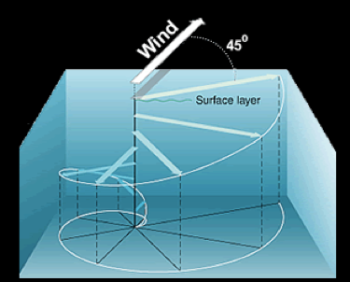
Ocean Gyre
Given the novel’s thematic complexity, the plot’s catalyst is comparatively simple. The North Pacific gyre delivers a lumpy plastic freezer bag to a British Columbian island shore, and Ruth finds it while walking on the beach. She guesses that it’s a bag of trash, and brings it home, intending to throw it out. But instead, she leaves it on the porch. Nested within this bag are contents that will radically change the way she looks at the world, herself, and her relationships.
It contains a Hello Kitty lunchbox packed with a diary, a packet of letters, and an old watch. The diary was written by teenager Nao Yasutani, but it’s not a typical diary, meant only for herself. Nao wrote it to the unknown person who she hopes will find it and read it at an unknown time. From the outside, it looks like an old hardcover copy of À la recherche du temps perdu, by Marcel Proust. In fact, the maker sliced out the book’s insides and glued a blank journal’s innards in its place. The package also contains letters and an old wristwatch.
When Ruth’s husband Oliver insists on examining the contents, Ruth feels a powerful aversion to it. Perhaps she senses the potential danger of this bag of objects, for they are from Japan, and may carry the radioactive contamination that blanketed the Fukushima region after its 2011 Daiichi nuclear disaster. But she may also sense that this package will be a powerful catalyst that transforms her own worldview—and this dramatic, impending change, however positive, may contribute to her instinct to get rid of it.
Nao’s gyre-delivered diary introduces Ruth to Buddhist philosophy, and her supernatural interactions with the material later spur her husband Oliver to try to explain the interactions using the principles of quantum mechanics.
1) Ocean and Environment (in which the foreground and background support each other)
Via motif, dialogue, personification, and sense of place, Ozeki uses the front story of the ocean gyre that delivers Nao’s package to Ruth to support the thematic substructure of environmentalism.
The reader first encounters a gyre, not thematically, but in the front story: in its oceanic manifestation. When Oliver and Ruth take inventory of the freezer bag, they note that its contents appear to have originated in Japan, and wonder how it came to wash up on their British Columbian island’s shore.
“I think it’s starting.”
“What’s starting?”
“Drifters,” he said. “Escaping the orbit of the Pacific Gyre . . .”
His eyes were sparkling and she could tell he was excited.
Oliver explains to Ruth what a gyre is, and how items that the Fukushima tsunami washed away are expected to hit their shores, transported by a gyre, but that this bag seems to be ahead of schedule. Objects can either escape—spin off from—a gyre, continue in the gyre’s current, or whirl into the becalmed center, which is what plastic waste often does, becoming, as is the case with the Western Great Garbage Patch, the size of half the continental U.S. There, it slowly disintegrates into granules that enter the food chain as marine life, from plankton on up, consume it.
The northern Pacific gyre has been pulling contaminated ocean water from Japan toward the west coast of the United States since the tsunami. This freezer bag’s contents are just a concrete representation of the contamination.
As Oliver shares the gyre’s lingo, it’s difficult not to become enchanted, despite the tragic nuclei of gyres’ polluting plastic.
Each gyre orbits at its own speed,” he continued. “And the length of an orbit is called a tone. Isn’t that beautiful? Like the music of the spheres. The longest orbital period is thirteen years, which establishes the fundamental tone. The Turtle Gyre has a half tone of six and a half years. The Aleut Gyre, a quarter tone of three. The flotsam that rides the gyres is called drift. Drift that stays in the orbit of the gyre is considered to be part of the gyre memory. The rate of escape from the gyre determines the half-life of drift . . .
Oliver’s explanation does so much more than educate Ruth and readers about oceanography. This straightforward front story discussion, ostensibly only about oceanic gyres, introduces several of the book’s important themes, including environmentalism, time, travel, and memory. On a craft level, Ozeki makes use of the scientific terminology related to gyres’ traits to personify them. Like a person, the gyre has a memory. Terms like “tone” and “the language of the spheres” imbue the gyre with a voice. This personification heightens the potential for readers to consider the plight of the environment with the empathy they would extend to fellow human.
Along with Nao’s freezer bag, the Turtle Gyre also appears to have ferried a Jungle Crow from Japan to their island. Oliver thinks the crow rode pieces of Fukushima debris all the way to their shore. In Japan, Jungle crows’ overpopulation is more than a nuisance. Oliver explains,
They memorize the schedule for trash pickups and then wait for the housewives to put out the garbage so they can rip it open and steal what’s inside. They eat kittens and use wire to make nests on utility poles, which short circuit the lines and cause power outages. . . .Children have to carry umbrellas to school to ward off attacks and protect themselves from droppings, and ladies have stopped wearing shiny clips in their hair.
Setting/sense of place comes into play here: Ruth and her neighbors may be extra-sensitive to imbalances in local animal life, and their town’s name, Whaletown, surely reminds them of what has already been lost. Naming the locality Whaletown gave Ozeki the opportunity to reinforce the environmentalism theme in a manner intrinsic to Ruth and Oliver’s geographic locality. “The name Whaletown had become a mere specter of the past, a crepuscular Pacific shimmer.” “It had once been a whaling station . . . . Most of them had been hunted out back in 1869.” “You could say that fossil fuels arrived just in time to save the whales, but not in time to save the whales of Whaletown.” The name is also a reminder that environmental abuses are nothing new.
As Ozeki uses sense of place to evoke Ruth’s world, she also underscores the environmental theme by imbuing Whaletown with evidence of a damaged, out-of-balance environment in the form of animals: the absent namesake whales and the invasive jungle crows.
2) Connection and Measurement (in which themes support the front story)
Ozeki deploys symbolism, parallel metaphors, and rhyming action amidst the background themes of “everything is connected” and of quantum mechanics’ measurement problem to support the front story of the gyre’s plastic drift, and Nao’s and Ruth’s unattained writing goals.
The notion that everything’s connected is one of the most primary tenets of Buddhism. Poet Jane Hirschfield’s concise definition of Buddhism, “Everything changes; everything is connected; pay attention” is a useful distillation.
We often think of different oceans as being isolated from each other, but the global oceanic gyre system serves as a circulatory system as holistic as the one that pumps blood throughout our bodies. The global thermohaline system that “circulates ocean water around the entire planet” is made up of gyres. This circulation system is “essential for regulating temperature, salinity, and nutrient flow throughout the ocean” (“Ocean gyres”). This system also redistributes the garbage that humans discard, moving it from one place to another, and ushering plastic debris into a Great Garbage Patch.
While Ruth is examining the contents of the freezer bag, Oliver talks about the half-life of plastic in a gyre with their retired anthropologist friend Muriel. Muriel explains that “the sea is filled with plastic confetti. . . . It’s in our food chain.” Humans throw it out (in the U.S., only 9.5% of plastic is recycled) (EPA), and much of it ends up in the ocean’s gyres and midden centers, where it breaks down into granules. A plastic bottle one person throws away in China joins a plastic wrapper discarded by someone in Washington State, and a plastic fork flung into the ocean at Venice Beach, and they all mingle with the millions of pieces of garbage near Hawaii’s Great Garbage Patches. “The Great Eastern Patch is the size of Texas. Plastic in ocean gyres symbolizes how we are interconnected, because our debris is interconnected, and in addition, the collective plastic disintegrates, is eaten by plankton and other fish, and goes all the way up the food chain, so that when we eat fish, we become physically interconnected with all of the people who threw away the plastic that became the slurry, and all of the animals who ate each other to resolve into the piece of salmon or flounder or mahi-mahi on our plate.
Ozeki also expresses the “everything is connected” theme by using parallel metaphors and rhyming action. She describes Ruth’s symptoms of menopause as “the climate changes in her own body. She was growing accustomed to sudden temperature shifts. . . . The smoldering pillow, which she often woke to find on the floor beside the bed where she’d flung it in her sleep, along with the covers, as though to punish them all for making her hot.” As the earth heats up, Ruth’s body is heating up. This use of a metaphorical parallel emphasizes Ruth’s connection to the earth instead of maintaining a false separation. Similarly, after 9/11, Nao writes about the portentous suspension felt by people around the world before the United States military retaliated. On the day America releases its revenge by bombing Afghanistan, Nao gets her period. Just as innocent people are killed by these bombs, bullies assault Nao in the girls’ bathroom at school. While one student films it, they attack her, pull her skirt over her head, tie her up, and steal her bloody underwear to later auction off to hentai (perverts) online. In another context, this might seem hubristic, or a clunky pathetic fallacy, but when viewed through the “everything is connected” lens, those judgments don’t apply.
Numerous parallels between Nao’s storyline and Ruth’s storyline reveal interconnectedness as well as quantum mechanics’ measurement problem.
Even before Ruth encounters Nao’s package, Nao and Ruth have parallel goals. Nao’s quest is to tell her great-grandmother Jiko’s life story within her diary, and Ruth’s quest is to write a memoir about her mother’s decline and death from Alzheimer’s. At the end of the book, they both feel that they have failed in reaching these goals according to their original visions. Their goals are examples of quantum mechanics’ measurement problem. The visions they initially have in their heads of what form these life stories should look like do not match what they have written. Oliver says, “Quantum information is like the information of a dream. . . . We can’t show it to others, and when we try to describe it we change the memory of it.” Ruth responds, “That’s what I feel like when I write, like I have this beautiful world in my head, but when I try to remember it in order to write it down, I change it, and I can’t ever get it back.”
In Letters to a Young Poet, Rainer Maria Rilke wrote,
Be patient toward all that is unsolved in your heart and try to love the questions themselves, like locked rooms and like books that are now written in a very foreign tongue. Do not now seek the answers, which cannot be given you because you would not be able to live them. And the point is, to live everything. Live the questions now. Perhaps you will then gradually, without noticing it, live along some distant day into the answer.
At the end of the novel, Nao’s final diary entry states, “And sometimes when I’m walking down the street, I find myself thinking, Oh please don’t let that stupid Lexus careen out of control and run me over . . . at least not until I finish writing old Jiko’s life! I can’t die until I do that. I have to live! I don’t want to die! I don’t want to die!” And yet readers have learned a lot about Jiko’s life story by reading the novel. If this were Jiko’s own memoir, what Nao has written about her in her diary might be enough. The story she intended to write took on a new and unexpected shape, per the measurement problem theme.
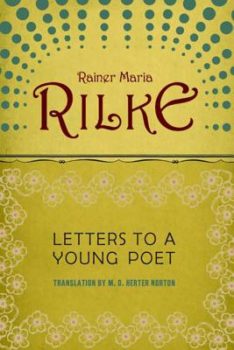 As Theo Pauline Nestor asserts in Writing Is My Drink, memoir is not supposed to be a forced march through one’s life. It’s supposed to depict a significant transformation in the life of the subject. Jiko’s most obvious transformation is her death, but it’s also the application of her impossible dream—to help all beings achieve enlightenment—to her great-granddaughter. She models and teaches the dharma that catalyzes Nao onto a spiritual path.
As Theo Pauline Nestor asserts in Writing Is My Drink, memoir is not supposed to be a forced march through one’s life. It’s supposed to depict a significant transformation in the life of the subject. Jiko’s most obvious transformation is her death, but it’s also the application of her impossible dream—to help all beings achieve enlightenment—to her great-granddaughter. She models and teaches the dharma that catalyzes Nao onto a spiritual path.
This incomplete quest serves an important purpose: to give Nao a passionate reason to live, and a reason to passionately live. Maybe Nao’s desire to write Jiko’s life according to her own expectations is impossible. But according to Buddhism and to Jiko herself, if you set an impossible goal for yourself and don’t achieve it, you still succeed if you remain committed to it. Jiko’s goal was to stay alive until every being on earth was enlightened. When Jiko dies before this happens, Nao realizes, at Jiko’s funeral, that Jiko didn’t fail, because “she’d been true to her impossible dream until the very end.”
As a parallel/rhyming action to Nao’s goal, almost every time Ruth sits down and reads Nao’s diary and then goes on an internet research spree to find out more about Nao and her family, she feels guilty for not writing her memoir. But the Ruth we meet at the beginning of the book is clearly not ready to write the memoir she needs to write. She has spiritual lessons to learn that will elevate the memoir if and when she does write it, because she will be writing from a wiser and more enlightened place after she completes the journey catalyzed by her interaction with the contents of Nao’s package.
3) Time Beings and What Time Is Now? (in which the theme and front story support each other)
In A Tale for the Time Being, the front story of Nao’s struggle to understand the meaning of now resolves in conjunction with her eventual understanding of the time being concept. The theme of Dōgen’s definition of the time being supports the front story, and the front story supports the Buddhist themes of interconnectedness (with onomatopoeia, motif, and parallel) and non-dualism (with paradox).
What is a time being? Before we learn Ozeki’s meaning, it’s useful to understand it in an American vernacular context. The “time being” (often used with the preposition “for”) generally refers to “now,” usually with a connotation of discontent, resignation, or impermanence. I have this job for the time being. She’s dating Erica, for the time being.
 But “time being,” is defined differently by Buddhist philosopher and priest Dōgen Zenji (1200–1253) in his book the Shōbōgenzō. To Dōgen, there is no separation between people and time because people are made up of moments of time. We are the sum total of all the moments that have come before and the present moment. Meditation can heighten this. Nao writes, “Jiko also says that to do zazen [Buddhist seated meditation practice] is to enter time completely.”
But “time being,” is defined differently by Buddhist philosopher and priest Dōgen Zenji (1200–1253) in his book the Shōbōgenzō. To Dōgen, there is no separation between people and time because people are made up of moments of time. We are the sum total of all the moments that have come before and the present moment. Meditation can heighten this. Nao writes, “Jiko also says that to do zazen [Buddhist seated meditation practice] is to enter time completely.”
Nao and Jiko see everyone and everything as time beings: humans, trees, memories. This includes gyres. They have names, histories, memories, and durations, as the drift within a gyre is called its memory, and their orbits have a rotation time called a tone. Perhaps because the time being is such a new concept for Ruth, she tends to identify only very old things as time beings: ancient trees, and the whale found off Whaletown’s coast in 2007—who was estimated to be 115-130 years of age.
As a child, Nao notices that her name is a cognate of now. “The word now always felt especially strange and unreal to me because it was me, or at least the sound of it was. Nao was now and had this whole other meaning.” She goes on to say,
In Japan, some words have kotodama, which are spirits that live inside a word and give it special power. The kotodama of now felt like a slippery fish, a slick fat tuna with a big belly and a smallish head and tail that looked something like this:
NOW felt like a big fish swallowing a little fish, and I wanted to catch it and make it stop.
She describes sitting in the back seat of her parents’ car as a child, as they drove,
and I kept the window open so the hot, dry, smoggy haze could blow on my face while I whispered Now! . . . Now! . . . Now! . . . over and over, faster and faster, into the wind as the world whipped by, trying to catch the moment when the word was what it is: when now became NOW.
But in the time it takes to say now, now is already over. It’s already then.
Then is the opposite of now. So saying now obliterates its meaning, turning it into exactly what it isn’t. It’s like the word is committing suicide or something. . . . Stuff like this can drive you crazy. . . . you have to take care of your mind, even if it’s not a great one, because if you don’t, you can wind up with your head on the tracks.
Ozeki introduces the Japanese concept of kotodama, “spirits that live inside a word and give it special power,” which first struck me as a kind of mystical onomatopoeia. But as I read more about kotodama, I learned that the belief is far more than a reference to a word’s vibe or aural evocation. Kotodama is a Japanese Shinto belief that saying a word creates an effect beyond its literal meaning or message, that “spiritual power can be manifested by intonation of certain words.” For instance, kotodama is used in the energetic healing modality of Reiki. Although kotodama is more than onomatopoeia, I believe that part of Nao’s experience of voicing the word “Now” is related to onomatopoeia. The single-syllable word is a perfect phoneme to represent a moment of time, because just as the experience of time can be mutable, the diphthong vowel construction, naaa—oohw, can expand or contract in a way that a choppy single vowel sound, like “no” generally does not. (Growing up on Long Island, the land of the chronically abused diphthong, gave me a sensitive ear for this.)
One of A Tale for the Time Being’s strongest motifs is mortality, and it surfaces here in the form of suicide. In this passage, Ozeki first evokes suicide symbolically. Nao connects the transformation of a present moment to a past moment to a conceptual suicide, as the present-ness of these moments dies. But a few lines later, the suicide motif resurfaces in literal form. “Stuff like this can drive you crazy. . . .you have to take care of your mind, even if it’s not a great one, because if you don’t, you can wind up with your head on the tracks.” Here Nao refers to her father Haruki #2’s first suicide attempt, when he threw himself in front of a train. Like Ozeki’s gyre motif, we see the suicide motif employed in tandem, literally and metaphorically. The suicide motif exists—within the same paragraph—as both a conceptual riff on the time being theme, and the front story of Nao’s father’s attempts to end his life.
About 140 pages later, Ozeki connects the now concept with the time being concept to show Nao’s evolving understanding, after Nao has experienced a great deal of spiritual growth at Jiko’s monastery.
Finally I achieved my goal and resolved my childhood obsession with now because that’s what a drum does. When you beat a drum, you create NOW, when silence becomes a sound so enormous and alive it feels like you’re breathing in the clouds and the sky, and your heart is the rain and the thunder.
Jiko says that this is an example of the time being. Sound and no-sound. Thunder and silence.
Nao marks NOW with her drum strikes. With “silence becomes a sound so enormous and alive,” Ozeki employs paradox. This supports the Buddhist theme of repudiating dualism, or the binary. Nao writes that “it feels like you’re breathing in the clouds and the sky, and your heart is the rain and the thunder,” to describe what she feels like when she becomes one with the now and experiences the Buddhist theme “everything’s connected.”
While doing research on the kinds of drums used in the Japanese Zen Buddhist context, I found out that Zen Buddhists commonly use something called a mokyugo, a “fish drum” or “wakeful drum” during meditation and ceremonies. Because fishes’ eyes never close, they are a symbol of the enlightenment as well as the wakefulness expected during Buddhist meditation. Fish are also one of the eight sacred symbols of Buddhism, in the same company as the dharma wheel. (“Mokyugo”).
Nao does not identify the drum as a fish drum. But it likely is a fish drum, due to the context and the way it is used in the novel.[1] This is an example of a parallel that can only be identified outside of the primary text. Readers who are knowledgeable about Zen Buddhist drums will get it. Others who do the research may make the connection, too. And then some people just won’t get it—and won’t know what they’re missing. This could be also very well be a meta game that Ozeki set up to reference Ruth’s internet research. Such is the embedded nature of this novel.
4) Roving Motifs (in which the front story supports the theme)
A motif whose meaning morphs throughout the course of the book is an example of a craft element going through a gyre process. Using motif, meta-ness, symbolism, parallel, and narrative tension, the front story of Nao’s and Oliver’s engagements with ginkgo trees supports the themes of memory, the time being, “right livelihood,” “everything’s connected,” environmentalism, and mortality.
Nao writes, “Memories are time beings, too, like cherry blossoms or ginkgo leaves; for a while they are beautiful, and then they fade and die.” In Nao’s diary entries, readers find “meta” footnotes such as this one, written by Ruth: “Ginkgo leaves are used in tea to enhance memory. Ginkgo trees were often planted on Buddhist temple grounds to help monks memorize sutras.” In this case, the footnote emphasizes an insight, something Ozeki also does when she uses Oliver as a didactic mouthpiece. By choosing to focus on ginkgo trees in the front story, Ozeki amplifies the thematic focus on memory. Early on in the novel, when Nao asks Jiko how to search for lost time, Jiko sends her a poem about a tree with fallen leaves.
I’m not very good at poetry, but when I read old Jiko’s poem, I saw an image in my mind of this big old ginkgo tree on the grounds of her temple. The leaves are shaped like little green fans, and in the autumn they turn bright yellow and fall off and cover the ground, painting everything pure golden. And it occurred to me that the big old tree is a time being.
In Nao’s mind, Jiko’s poem evokes the ginkgo tree as both a symbol of time, and efforts to recover time. Ozeki also uses symbolism to describe the tree. The “little green fans” turn yellow in response to summer turning to fall, each leaf a litmus test changing color due to its exposure to the passing of time.
The ginkgo leaf suggests a range of symbolic connotations: Ozeki evokes ephemerality by using the image of a fan: a ceiling fan’s blades move like accelerated hands of a clock, and a hand-held fan moves the air back and forth like a clock’s pendulum. She also evokes ephemerality by showing how leaves that were once green and attached to tree branches die, turn yellow and then fall off the tree. These fallen leaves symbolize death, but the tree will sprout new leaves each spring, which symbolizes rebirth.
Even though the leaves are no longer attached to the tree, they are not lost. Nao can pick them up the same way she needs to retrieve lost moments of time, aka lost memories—which evokes the way monks uses ginkgo leaves in their tea to enhance the power of their memory.
Ginkgo trees are also important to Ruth’s husband Oliver, an artist who incorporates environmental restoration into his work. Without identifying as a Buddhist, he practices the dharma wheel-spoke of “right livelihood,” “to do work that is helpful to others” and “right action,” to do no harm.
Anticipating the effects of global warming on the native trees, he was working to create a climate change forest on a hundred acres of clear-cut, owned by a botanist friend. He planted groves of ancient natives—metasequoia, giant sequoia, coast redwoods, Juglans, Ulmus, and ginkgo—species that had been indigenous to the area during the Eocene Thermal Maximum, 55 million years ago. . . . He described it as a collaboration with time and place, whose outcome neither he nor any of his contemporaries would ever live to witness, but he was okay with not knowing.
Just as an old, established ginkgo tree symbolizes lost but recoverable time to Nao, in a parallel construction, a baby ginkgo tree symbolizes a future healing influence on the environment. These trees are time beings that will fulfill their true purpose decades and even centuries after Oliver dies, if they survive. Practicing right livelihood and right conduct, Oliver represents a person who is able to exert healing efforts toward the earth in the future, even if it doesn’t benefit him, as a steward instead of a thoughtless consumer.
Later in the novel, community members challenge Oliver’s desire to plant ginkgo trees.
“I’ve got a whole flat of baby ginkgoes ready to be planted, but the covenant holders won’t let me. They’re saying the ginkgoes are potentially invasive. . . . It’s insane. That tree . . . survived major extinction events over hundreds of millions of years. . . . And now they’re going to die on our porch if we can’t get them in the ground soon.”
Here Oliver conflates the lifetime of the species with the specific mortality of these baby trees. which heightens the narrative tension.
This fear of death related to ginkgo trees is evoked in a different context when Nao walks into her apartment and finds her father passed out after his latest attempt to commit suicide. “The apartment smelled like stinky ginkgo trees. . . . It smelled like garbage and throw-up.” Her father is the source of these smells; he threw up after overdosing on pills.
While doing research to confirm that ginkgo trees do in fact sometimes smell bad (female trees do),[2] I also learned that ginkgo trees can spontaneously change sex, another possible expression of Ozeki’s meta game and an additional front-story underpinning of “Everything’s connected, everything changes, pay attention.” The slippery motifs continue as the novel considers the themes in the next section.
[1] Fish drums do not necessarily look like fish (although some do).
[2] “When the female ginkgo trees shed their leaves and berries, they rot and emit a stench often likened to dirty gym socks, vomit, or poop” (McMurray and Quimby).

